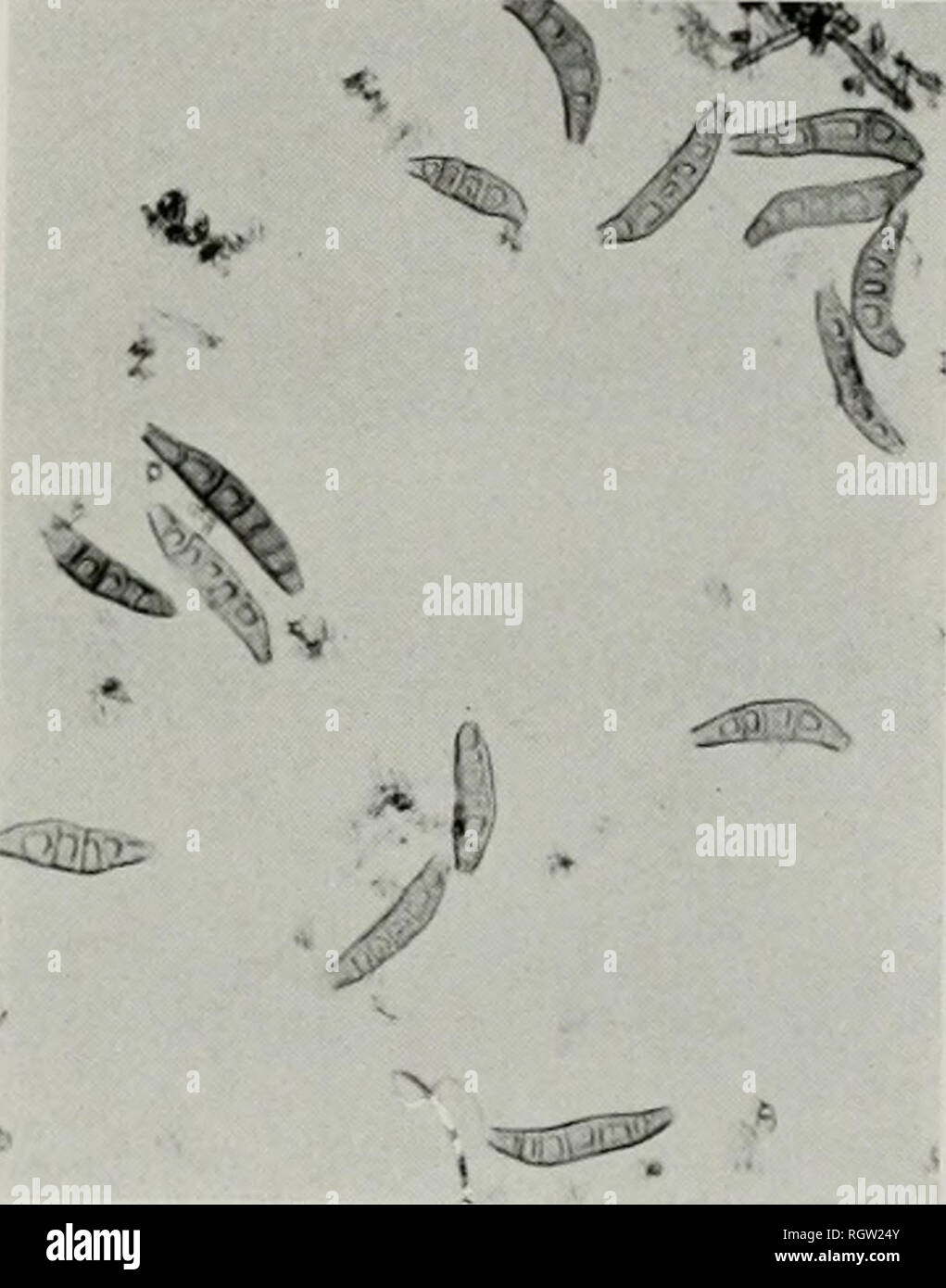. Bulletin. Natural history; Natural history. Fig. 8.- Portion ot' an acervulus of Coryrie- 11)11. Several attached spores and the broken host tissue are shown on the upper portion ot' the acervulus. X 100. iKilly tile cankerous tissue is light brown, and the discoloration in the xylem does nut progress over 2 cm. beyond the ex- ttrnal cankered region. From observa- tiiiii it seems quite evident that Cnryrieum liriiws ear after year and that the cankers progress down the branch. Not infre- quently a canker encircles a branch and de elops into dieback, which may progress to the base of the br

Image details
Contributor:
Library Book Collection / Alamy Stock PhotoImage ID:
RGW24YFile size:
7.1 MB (216 KB Compressed download)Releases:
Model - no | Property - noDo I need a release?Dimensions:
1401 x 1783 px | 23.7 x 30.2 cm | 9.3 x 11.9 inches | 150dpiMore information:
This image is a public domain image, which means either that copyright has expired in the image or the copyright holder has waived their copyright. Alamy charges you a fee for access to the high resolution copy of the image.
This image could have imperfections as it’s either historical or reportage.
. Bulletin. Natural history; Natural history. Fig. 8.- Portion ot' an acervulus of Coryrie- 11)11. Several attached spores and the broken host tissue are shown on the upper portion ot' the acervulus. X 100. iKilly tile cankerous tissue is light brown, and the discoloration in the xylem does nut progress over 2 cm. beyond the ex- ttrnal cankered region. From observa- tiiiii it seems quite evident that Cnryrieum liriiws ear after year and that the cankers progress down the branch. Not infre- quently a canker encircles a branch and de elops into dieback, which may progress to the base of the branch. In a few cases Coryneiii/i was associated with twig blight. Coryneum canker and dieback was found on pin, red and white oaks. The fungus (Ifiryiieum was grown from cankerous bark, discolored wood, blighted twigs and li ing wood adjacent to developing cankers un post, shingle, red, swamp hite and white oaks. The acervulus of Coryneuin is laid down fundamentally in the phellogen-phelloderm region of the bark. Development of a compactly interwoven hyphal mass, the base of the acervulus, causes a separation uf the associated tissues that is accom- panied by very little cellular disintegration. Further development of the acervulus, especially about the time conidia are pro-. Fig. 9.—Spores of Coryneum. Each tip cell and base cell of the tan to olive-brown, curved spores are hyaline. X 230. duced, ruptures the overlying phellem, epidermis and cuticle, forcing these tissues back ; the result is a more or less triangular opening through which the black acervulus is visible. A portion of an acervulus in vertical section, with attached conidia, is shown in tig. 8. The erumpent acervuli are dark brown to black, discoid or pulvinate, compact, 1000-1500 /i in diameter and 260—100 /I. high. Conidia are shown in fig. 9. They are 3- to 6-septate, not constricted at septa; they are curved, clavate or nar- row-fusiform, tan to olive brown, 40-80 X 9—18 yu, with each tip and base c